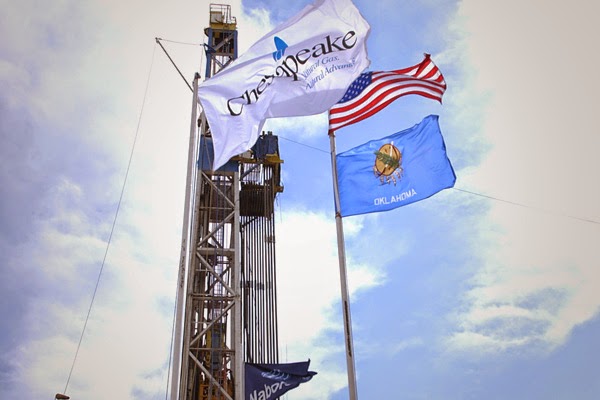25 Feb 2014
More
Will Chesapeake Energy Go Down the Same Road Again?
posted by Unknown @ 09:31 0 Comments
When you say the name Haynesville
Shale it brings shudders to some energy execs, especially the higher-ups at Chesapeake Energy. Chesapeake sank billions into the play only to sit and watch
helplessly as natural gas prices plummeted.
In fact,Chesapeake
was in so deep it had to start selling off parcels of the land just to bridge
the gap in its books. Last year alone
the company sold off 5600 acres in Haynesville to EXCO Resources. Proceeds for the sale netted the company $320
million.
Chesapeake
believes it could even further reduce costs if it adopts the model of the
smaller EXCO. EXCO achieved even lower costs
than Chesapeake at just $7.5
million per well in the 3rd quarter of 2013.
Is
In fact,
The deal also included the company’s position in 170 wells
that EXCO already operated. While the
deal was necessary at the time, still at Chesapeake
it is a sore spot. The company was
forced to sell its assets at well below previous market value.
A better natural gas climate
With natural gas prices now in the $6 per mcf range, having
more than doubled in the last few months alone, Chesapeake
may now be on the way back to Haynesville.
Chesapeake entered into the
field back in 2008 and is now paying more attention to its assets there.
In fact, the company says it will spend as much as 10
percent of its current capital in order to fund up to nine rigs in the
Haynesville play. If so, that means a 25
percent increase from last year.
Falling costs add to the bottom line
If Chesapeake
can get its costs down to just $7.9 million per well, that would mean a 23 percent
reduction from just two years ago.
Multi-well pads have added to cost efficiency and play a big role in
keeping down costs.
Is Chesapeake making the right
move?
Right now natural gas prices have spiked, but could Chesapeake
be making a hasty move by going all-in back into the Haynesville fields? Price spikes are usually short-lived and
companies are often cautious.
But this price increase was not fuel by speculators, as is
usually the case. This time the laws of
supply and demand were the driving force.
The harsh winter has depleted the once 5 tcf of natural gas to what is
expected to be just 1 tcf by winter’s end.
If these estimates pan out, that means it’s going to take a
while to get stockpiles back up to previous levels. That means prices will remain higher, and for
a significant period of time. At least,
that’s the conventional wisdom, and that’s what Chesapeake
is banking on.
Also from Brown
If you're in the oil business then you know just how important your tools are. Come check out all the great tools at our news tools division site, BrownToolBox.com.
If you like keeping up with news and events, we invite you to come see our new oil & gas media site, BrownPetro.com.






0 Comments:
Post a Comment
Subscribe to Post Comments [Atom]
<< Home